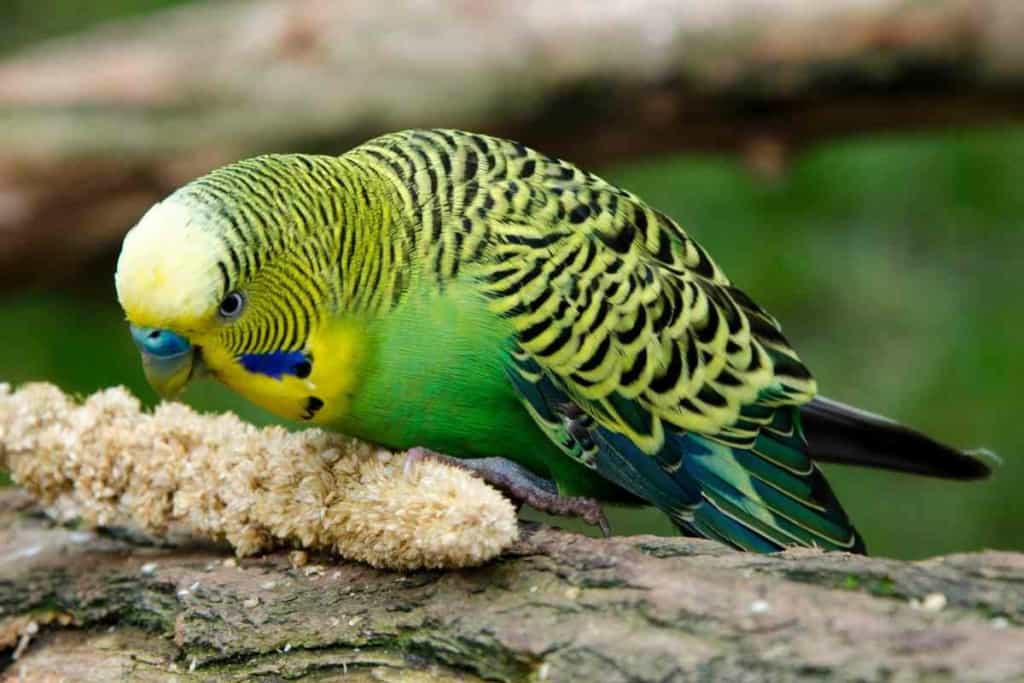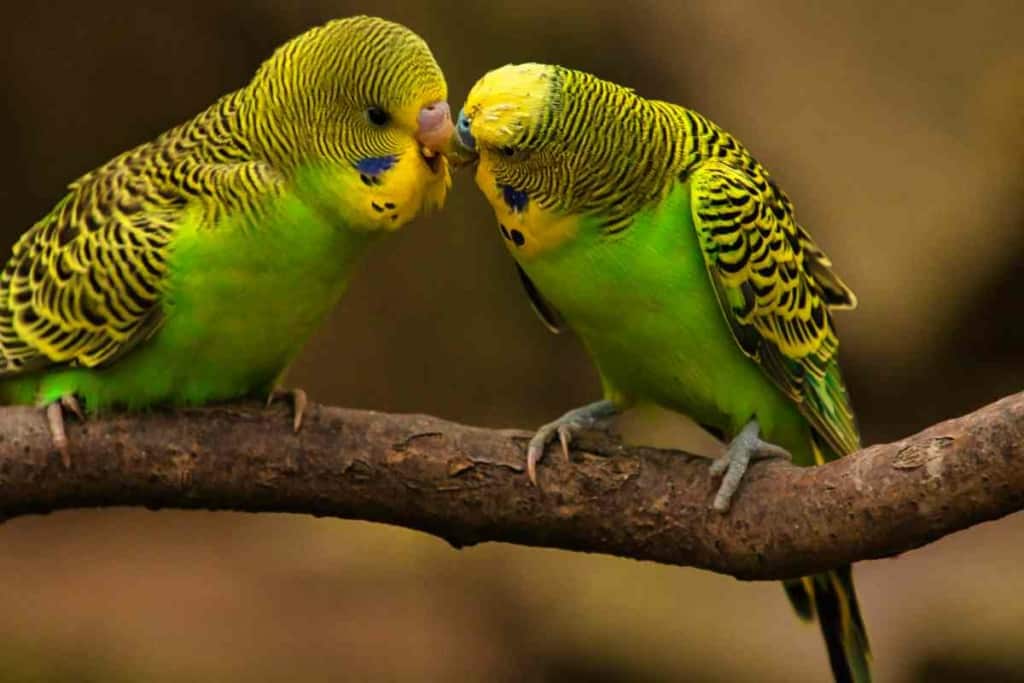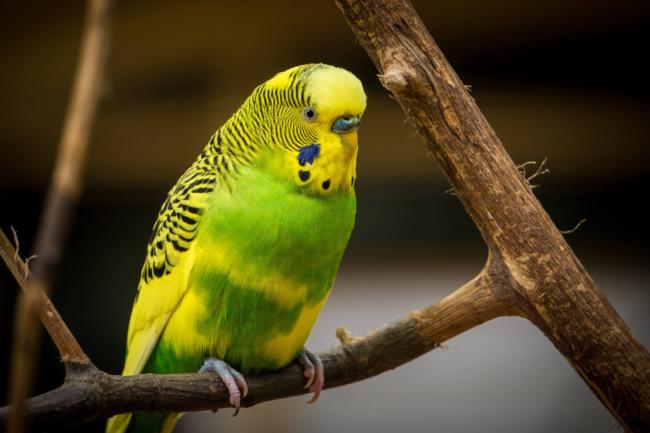Meet the budgie, a playful and intelligent parakeet known for its curious behaviors. With its endearing head bobbing, budgies communicate affection, curiosity, and happiness.
Also, they are skilled mimics, delighting with their ability to imitate human speech and sounds. These social birds thrive on interaction, forming strong bonds with their flock or human caregivers.
Budgies engage in head bobbing for various reasons. It could be a response to boredom or a way to seek attention.
Another common trigger is hunger. Additionally, head bobbing might be an indicator of territorial aggression. Lastly, it serves as a mating dance, aimed at attracting a potential partner
Why Do Budgies Bob Their Heads?

Budgies, also known as parakeets, are small, intelligent birds known for their curious and playful behaviour.
One of the common behaviours observed in budgies is head bobbing. There are a few reasons why budgies exhibit this head-bobbing behaviour:
- Communication: Budgies use head bobbing as a form of communication. It is often seen during courtship and bonding between mates. The head bobbing can be a way of showing affection and establishing a connection with other budgies.
- Curiosity and Exploration: Head bobbing is also observed when budgies are exploring their environment or encountering something new.
They might bob their heads to get a better view of their surroundings or to focus their attention on a specific object.
- Sign of Happiness: A budgie that is feeling content and happy may express its emotions through head bobbing.Additionally, it’s a way of displaying their excitement and positive emotions.
- Visual Acuity: Budgies have monocular vision, meaning each eye can move independently. The head bobbing behaviour can help them adjust the angle of their vision and improve their depth perception, making it easier for them to locate food or identify potential threats.
- Imitation: Budgies are known to be excellent mimics. If they see their owners or other budgies bobbing their heads. They may imitate the behavior as a form of social learning.
- Vocalisation: Head bobbing can be associated with vocalisations. When budgies are singing, chattering, or making other vocal sounds. They may also bob their heads to add emphasis and rhythm to their communication.
- Body Language: Head bobbing is just one aspect of a budgie’s body language. When combined with other behaviours like tail movements, wing flapping, and body postures, head bobbing can convey a variety of messages, such as excitement, playfulness, or even a warning.
- Social Interaction: Budgies are social animals, and head bobbing can serve as a way to interact with other birds in their flock or with their human caregivers. It can be a form of greeting or a friendly gesture.
- Courtship Ritual: During courtship displays, male budgies may bob their heads as part of an elaborate dance to attract a potential mate. This behaviour is often accompanied by fluffing their feathers and showing off their vibrant colours.
- Stress or Anxiety: While head bobbing is generally associated with positive emotions, in some cases, budgies may also bob their heads when they are feeling stressed or anxious. This behaviour can be accompanied by other signs of discomfort, such as feather plucking or vocalisations of distress.
What are the key characteristics that distinguish budgies as charming and enchanting pets?
Budgies, scientifically known as Melopsittacus undulatus, are small and colourful parrots native to Australia. They are one of the most popular and widely kept pet birds worldwide.
Also, with their vibrant plumage and charming personalities, budgies have captivated bird enthusiasts for decades.
Here a general understanding of budgies, encompassing their characteristics, natural habitat, social behaviour, and communication patterns.
Physical Characteristics:
Budgies are relatively small parrots. It measures around 7-8 inches (18-20 cm) in length.
They possess a distinctively long tail, which can often be longer than their body.
Moreover, budgies exhibit a wide array of colour variations, including blue, green, yellow, white, and combinations of these colours.
In addition, males and females have subtle differences in appearance, with males often displaying a ceres (nose) colour that is blue, and females having a pale brown or beige ceres.
Basically, budgies are native to Australia, and specifically found in various habitats ranging from open woodlands to arid shrublands.
Social Behavior:
Budgies are highly social birds and typically form flocks in the wild, consisting of numerous individuals.
They display strong bonding behaviours within their flocks and form close relationships with their companions.
In captivity, budgies can also develop strong bonds with their human caretakers. It displays affection and seeks interaction.
Communication and Vocalizations:
Budgies are known for their remarkable vocal abilities. They are excellent mimics and can learn to imitate various sounds and human speech.
Their vocalisations include chirping, chattering, whistling, and squawking. Vocalization plays a vital role in their social interactions and establishing territories.
Diet:
In the wild, budgies primarily feed on a diverse diet of seeds, grains, grasses, and occasionally fruits and vegetation.
In captivity, a balanced diet typically includes commercially available budgie seed mixes, supplemented with fresh vegetables and occasional fruits.
Breeding Behaviour:
Budgies are prolific breeders, and breeding pairs may form within a community or in captivity.
Female budgies lay eggs in a nesting box, and both parents take part in incubating the eggs and raising the chicks.
Popularity as Pets:
Budgies are immensely popular as pets due to their small size, vibrant colours, and engaging personalities.
In addition, they are relatively low-maintenance birds. It makes them suitable for both beginners and experienced bird enthusiasts.
How does understanding the science behind budgie’s head – bobbing??
Budgie’s head-bobbing behaviour is intriguing and multifaceted, with various potential reasons behind this common phenomenon.
Communication and Social Signals:
- Interactions with Other Budgies: Head-bobbing may serve as a non-vocal form of communication between budgies. Additionally, it could convey friendly intentions, assert dominance, or establish hierarchy within a group of budgerigars.
- Interactions with Humans and Other Pets: Budgies might head-bob in response to human interaction or the presence of other household pets. This behaviour could indicate trust, curiosity, or caution.
Courtship and Mating Behaviour:
- Head-bobbing as part of the Courtship Display: During courtship, male budgies often engage in elaborate displays. It includes head-bobbing, to attract females. This rhythmic behaviour may be a visual cue to signal readiness for mating.
- Relationship between Head-Bobbing and Breeding Behaviour: The intensity and frequency of head-bobbing could correlate with budgie reproductive cycles or hormonal changes associated with breeding.
Environmental Stimuli:
- Response to Music or Sounds: Budgies are highly sensitive to auditory cues. Head-bobbing may be triggered by certain types of music, sounds, or even familiar voices, possibly indicating a positive or negative response.
- Interaction with Toys and Objects in the Environment: Playful head-bobbing may occur when budgies interact with toys, perches, or objects in their environment, expressing curiosity and engagement.
Health and Comfort:
- Possible Connection between Head-Bobbing and Well-being: Budgies may head-bob as a sign of contentment, comfort, or relaxation. Conversely, prolonged or excessive head-bobbing might indicate stress or discomfort.
- Investigating Signs of Stress or Illness through Head-Bobbing: Sudden changes in head-bobbing behaviour could be an indicator of potential health issues, and close observation may help identify underlying problems.
How can budgie head-bobbing serve as a form of communication between the bird and its owner?

Understanding Budgie Behavior for Better Care and Communication:
Emphasising the importance of interpreting and responding to budgie body language, including head-bobbing cues.
It provides insights into recognizing signs of contentment, stress, or discomfort through head-bobbing patterns.
Tips for Interpreting and Responding to Head-Bobbing Cues:
Offering practical guidelines for budgie owners to interpret their pet’s head-bobbing behaviour accurately.
Providing Enriched Environments for Budgies:
Exploring ways to create stimulating and safe environments that encourage natural behaviours in budgies.
Additionally,it offers ideas for enriching their surroundings with toys, perches, and interactions to prevent boredom and improve overall well-being.
Reducing Stress and Encouraging Natural Behaviour:
Highlighting methods to minimise stress in budgies, particularly during significant life changes or challenging situations.
Promoting practices that allow budgies to engage in instinctual behaviours, including head-bobbing, for a happier and healthier life.
FAQs
Is head bobbing normal in budgies?
Yes, head bobbing is a normal behaviour in budgies.
Why does my bird keep bobbing his head?
Budgies may bob their heads for communication, exploration, playfulness, and to show affection. It’s a natural part of their behaviour.
How can you tell if a budgie is happy?
A happy budgie may show relaxed body language, chirp or sing, engage in playful behaviours, and have bright eyes and healthy feathers.
How do you know if your budgie is stressed?
Signs of stress in budgies include feather plucking, aggressive behaviour, excessive vocalisations, loss of appetite, and changes in body language.
How do I relax my budgie?
Providing a calm and secure environment, gentle interaction, and offering enjoyable toys and perches can help relax a budgie.
What does a sad budgie look like?
A sad budgie may display a hunched posture, fluffed feathers, decreased vocalisations, and reduced activity.
How do I tell my budgie I love them?
Show your budgie love through regular interaction, spending time together, offering treats, and providing a safe and enriched living environment.
Conclusion
Our exploration of budgie head-bobbing behaviour has revealed a multifaceted aspect of these intelligent and social birds.
Gathering knowledge about the reasons behind this behavior empowers budgie owners and enthusiasts to build stronger connections with their feathered companions. And provide them with optimal care and attention.
By combining scientific knowledge with personal experiences, we gain a deeper appreciation for the delightful and endearing qualities of budgerigars.
As we continue to learn and explore the intricacies of budgie behavior, we foster a profound bond that enriches the lives of both budgies and their human caretakers.

